White Kitchen Remodeling Project in Houston, TX
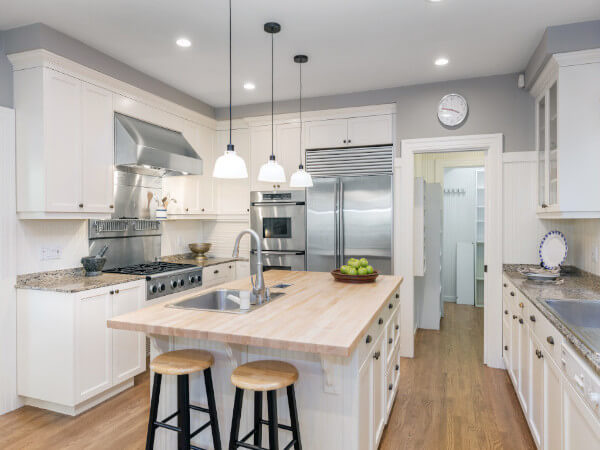
The post White Kitchen Remodeling Project in Houston, TX appeared first on Kitchen Remodeling & Bath Remodel Services | USA Cabinet Store.
Small Kitchen Remodeling Project in Houston, TX
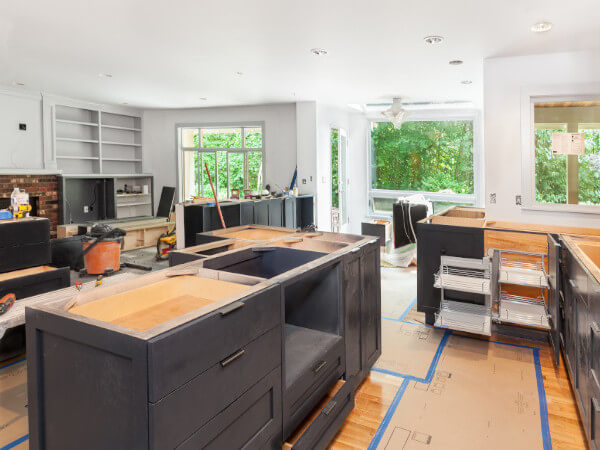
The post Small Kitchen Remodeling Project in Houston, TX appeared first on Kitchen Remodeling & Bath Remodel Services | USA Cabinet Store.
Domestic Cabinet Sales Termed ‘Healthy’ Through November

RESTON, VA — Major domestic kitchen cabinet/vanity manufacturers continued to report “healthy” sales through November of 2021, according to the latest in a series of monthly surveys conducted by the Kitchen Cabinet Manufacturers Association.
The KCMA’s latest “Trend of Business Survey” reflected a year-to-date sales increase among participating cabinet manufacturers of 14.6% through November, compared to the same 11-month period in 2020. Custom cabinet sales through the first 11 months of 2021 were reported up 20.1% over the same period the previous year, while semi-custom sales rose 10.8% and sales of stock cabinets gained 16.2%, the Reston, VA-based KCMA said.
Survey participants include stock, semi-custom and custom companies whose combined sales represent approximately 75% of the U.S. kitchen cabinet and bath vanity market, according to the KCMA.
The post Domestic Cabinet Sales Termed ‘Healthy’ Through November appeared first on Kitchen & Bath Design News.
Classic Kitchen Design Project in Houston, TX

The post Classic Kitchen Design Project in Houston, TX appeared first on Kitchen Remodeling & Bath Remodel Services | USA Cabinet Store.
Gallery Kitchen Remodeling Project in Houston, TX
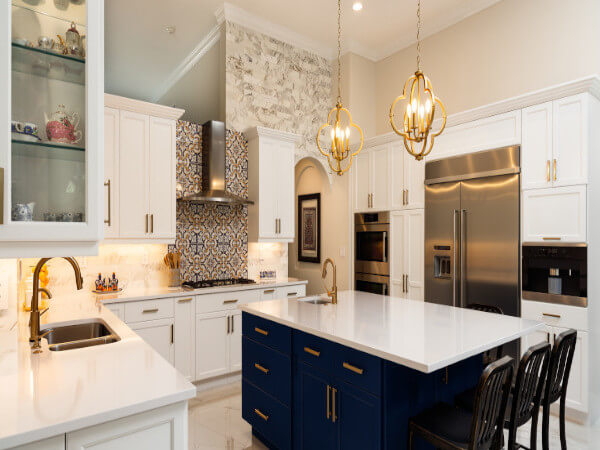
The post Gallery Kitchen Remodeling Project in Houston, TX appeared first on Kitchen Remodeling & Bath Remodel Services | USA Cabinet Store.
Stylish Kitchen Remodeling Project in Houston, TX
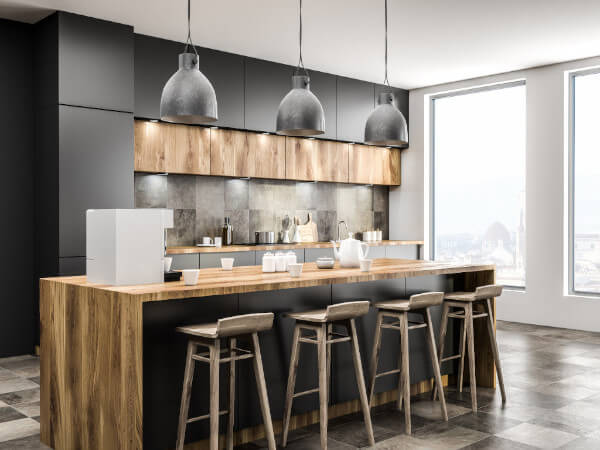
The post Stylish Kitchen Remodeling Project in Houston, TX appeared first on Kitchen Remodeling & Bath Remodel Services | USA Cabinet Store.
Collaboration Transforms Kitchen
Rowayton, CT — Karen Berkemeyer and Leslie Dunn often work together to create their clients’ dream kitchens and baths, with the former focusing on kitchen/bath design skills and the latter incorporating interior design touches for their respective companies of Karen Berkemeyer Home in Westport, CT, and Dunn Designs in Norwalk, CT. This kitchen, along with the master bath and a guest bath, was no exception…however, this time the resultant collaboration was showcased in Dunn’s personal residence.
“We work really well together,” says Berkemeyer, noting a mutual respect for each other’s talents, which makes for great collaborations. “As a kitchen and bath designer, I focus on making sure these spaces technically and functionally work correctly. Partnering with another professional, such as an interior designer, gives clients the best of two worlds since multiple people are working on the same project. I love working with Leslie because she is so creative and has great taste. She is especially talented and creative with paint.”
Contrasting color
Paint, at opposite ends of the color spectrum, is a focus of Dunn’s kitchen, where the bright white island is contrasted with dark black perimeter cabinets.
“The use of color – combined with very simple cabinet door styles, which are a great choice for today’s kitchens – makes this design stand out,” says Berkemeyer.
Black perimeter cabinets served as the starting point for color. “She really wanted to do black cabinets,” Berkemeyer indicates.
As a contrast, the island was designed to look like a table that Dunn found, notes the designer. “Island and perimeter cabinets don’t necessarily have to match in cabinet style or color,” she says. “In fact, when done well, like in this kitchen, having them not match shows a lot of creativity and makes for an interesting design.”
Keeping cabinet styles simple is the key to making a ‘mismatch’ work, says the designer in reference to the flat-panel, flush-inset Wood-Mode perimeter cabinets and full-overlay, shallow-cut, Shaker-style Signature Custom Cabinetry cabinets on the island. Both are sheathed with custom colors selected by Dunn.
“You would never do this perimeter with oak raised-panel doors on the island,” she says. “This perimeter features a very simple door style, as does the island. They play off of each other well. This entire kitchen has created so much interest from people. They see things they would have never thought of doing…and they like the result.”
The designers also kept the cabinet hardware unpretentious. Pulls on the perimeter cabinets bring to mind cleats used to anchor boats to a dock, giving the space a bit of a nautical vibe that pays homage to the water just beyond the kitchen windows. For the island, they incorporated drawer pulls that resemble those found on a filing cabinet. Berkemeyer also designed the island with seating for four, positioning stools at a right angle to facilitate conversation between guests. The designer also added custom brushed steel accents at each leg base.
“They add another texture to the space and make the island more interesting,” she says.
To continue the contrast between light and dark, Berkemeyer topped the island with white marble, which she built up with a 2″ mitered edge. The perimeter features median-black, charcoal-colored quartz with a leathered finish for added texture.
White 3″x6″ subway tile covers the walls, extending from the countertop to the windows and beyond. Its undulated surface offers a rippled appearance while its stark light color juxtaposes against the blackness of the shallow-depth soffit on the ceiling.
“I thought the kitchen stopped too abruptly in the corner,” notes Berkemeyer in reference to the soffit. “I suggested that we add the soffit, extending it to the refrigerator on one wall and across the length of the windows on the other. It really helps pull the whole kitchen together.”
Additional dark-hued accents include the deep blue paint that adorns the window trim. “She really likes to include the unexpected!” she says.
Overcoming storage challenges
To make better use of the kitchen’s footprint and gain a few extra feet of space, the designers removed walls between the living room and kitchen, eliminating a hallway in the process. To provide visual differentiation between the two spaces without adding a physical barrier, they added reclaimed antique beams in the ceiling, extending them into the living room.
“Previously, her home had an enclosed little kitchen with separate living room,” says Berkemeyer. “Now, the kitchen is more open and looks so much larger. Taking down the wall also made it possible to include the island.”
Even with the additional space gained by removing the hall, storage was a challenge for the relatively petite kitchen. “When spaces are smaller, like in this kitchen, the biggest design challenge is usually storage,” she says. “It’s important to make the most of whatever space you have, and to make everything accessible, especially focusing on corners. Taking cabinets up to the ceiling maximizes the space. It’s important, too, to pay attention to clearances, ensuring that walkways are technically correct and easy to maneuver.”
To overcome storage concerns in Dunn’s kitchen, Berkemeyer included specialized corner organization accessories, recycling bins, pull-out drawers and several large drawers to make contents easy to access.
Glass panels in the wall cabinets provide a brief glimpse of their contents and keep the space visually ‘light.’ “Like the rest of the kitchen, the glass is kept clean, without any mullions, to maintain the desired look for the space,” she concludes.

The post Collaboration Transforms Kitchen appeared first on Kitchen & Bath Design News.
Did you miss our previous article…
https://anekitchencabinets.com/?p=700
Gains in Single-Family Housing Expected to Increase in 2022

WASHINGTON, DC — Breaking an eight-year trend, there have been more single-family homes under construction in recent months than multifamily units, according to the National Association of Home Builders, which predicted additional gains in single-family construction in 2022.
Despite some cooling earlier this year, the continued strength of single-family construction in 2021 means that there are now 28% more single-family homes under construction than a year ago, said Robert Dietz, chief economist for the Washington, DC-based NAHB.
“These gains mean single-family completions will increase in 2022, bringing more inventory to market despite a 19% year-over-year rise in construction material costs and longer construction times,” Dietz said.
Ongoing single-family and multifamily housing production accelerated in November, due to strong demand, with overall housing starts increasing 11.8% to a seasonally adjusted annual rate of 1.68 million units, according to U.S. government figures.
Despite inflation concerns and ongoing production bottlenecks, builder confidence in the market for newly built single-family homes also edged higher for the fourth consecutive month on strong consumer demand and limited existing inventory, the NAHB added.
“While demand remains strong, finding workers, predicting pricing and dealing with material delays remains a challenge,” said Dietz. “Building has increased but the industry faces constraints, namely cost/availability of materials, labor and lots. And while 2021 single-family starts are expected to end the year 24% higher than the pre-COVID 2019 level, we expect that higher interest rates in 2022 will put a damper on housing affordability.”
The post Gains in Single-Family Housing Expected to Increase in 2022 appeared first on Kitchen & Bath Design News.
Did you miss our previous article…
https://anekitchencabinets.com/?p=697
Demand Seen Strong for Aging-in-Place Remodeling Projects
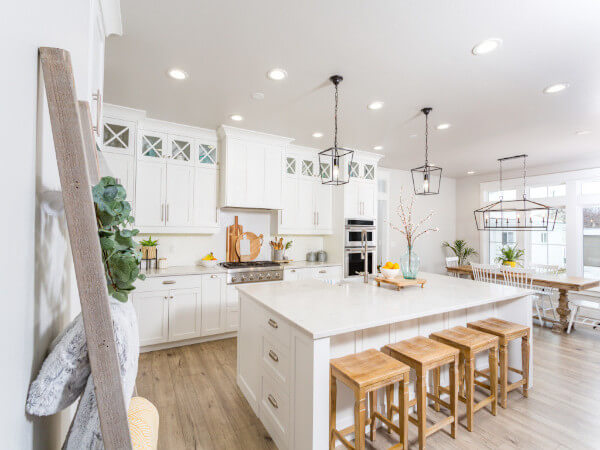
FOSTER CITY, CA — A significant percentage of American homeowners across multiple home-improvement trades plan to explore aging-in-place projects for themselves or a loved one in the coming year, a newly released survey reveals.
According to the survey’s findings, some 63% of the homeowners polled report that they will explore aging-in-place home improvement projects for themselves within the next 12 months, while another 6% plan to do so for a loved one.
The November survey, which involved some 2,110 respondents in the U.S., was conducted by Modernize Home Services, a Foster City, CA-based online firm that connects homeowners with contractors and other home-services professionals. The company operates in more than 15 home segments, including bathrooms and kitchens.
Among the primary projects to be considered, researchers said, are bath remodels that feature walk-in tubs and seats within a shower. Other aging-in-place products in high demand include medical alerts, non-slip flooring, stair lifts, grab bars and wider hallways.
“There are a few projects that offer more safety and security – such as installing brighter lightbulbs – that can be done by any homeowner, but more complex projects like walk-in tubs and concurrent bath and kitchen upgrades require professionals,” said Modernize V.P. Gregg Hicks. “This study shows an opportunity for contractors to capitalize on the increased demand for aging-in-place home improvement projects in the coming years.”
The post Demand Seen Strong for Aging-in-Place Remodeling Projects appeared first on Kitchen & Bath Design News.
Did you miss our previous article…
https://anekitchencabinets.com/?p=694
Wellness Features Termed a ‘Necessity’ for Today’s Homes

INDIANAPOLIS — Wellness features, impacted by the COVID-19 pandemic and an elevated awareness of indoor environments’ impact on physical and mental health, are no longer a luxury, but rather a necessity in today’s homes, a leading wellness expert contends.
According to Dr. Jie Zhao, exec. v.p. of Delos, a New York-based wellness real estate and technology company, COVID-19 has literally reshaped the way homes – including kitchens and baths – will be designed, built, equipped and remodeled in years to come.
“People are much more cognizant of the important role that homes play in our lives, and how these environments can have a positive or negative impact on the wellness of their inhabitants,” Jie said.
At the recent “Insights Summit,” an annual event sponsored by the Home Improvement Research Institute (HIRI), Jie outlined four key wellness trends that he believes will have the greatest impact on home improvement in the post-pandemic world. Among them:
• Indoor Air Quality: Because viruses spread through the air much easier than by surface contact, the pandemic shed light on the importance of indoor air quality, or IAQ, as a component of a healthy home, Jie said.
“Air filtration is vital to the reduction of particle transmission,” he observed. “Not only can air-cleaning technologies improve peace of mind when it comes to invisible health threats like COVID-19, they also tackle visible particles in the air such as smoke and other harmful particles.”
Jie said that ventilation and/or ionization technology will be at the forefront of the fight against contaminated air in home spaces. “For this reason, IAQ may be the biggest wellness trend to have emerged from the pandemic,” he noted.
• Mental Wellness: Mental wellness issues persisted long before the emergence of the coronavirus, but the amount of attention devoted to the topic increased significantly afterward, Jie said, noting that mental health came to the forefront of conversation due to isolation during stay-at-home orders.
Jie observed that one result of this for the home-improvement industry is the general migration away from congested cities in favor of larger residences, more nature and less commuting time. Jie also pointed to the effect of mental wellness on increased demand in certain product categories, including home entertainment, artists’ supplies, sports equipment and pets.
• Home Offices: Another major change emerging from the pandemic is the increased importance of the home office.
“Many employees have made investments in their home offices and have gotten used to working from home,” Jie said, pointing to surveys which found that 80% of workers want to be able to work from home three days per week, and 92% want at least one remote workday per week.
“There has been a rise in office furniture and accessories that support health and wellness, such as the standing desk or ergonomic keyboard,” Jie said, adding that 20-25% of companies are currently reimbursing their employees for wellness-related home office supplies and furniture, “hinting at the prospect that work-from-home may be around well into the coming years.”
• Fitness: While the spread of COVID-19 led to the temporary closure of most gyms and athletic institutions, it gave rise to new home fitness technologies, as people sought to stay fit within the confines of their own homes, Jie pointed out.
“Companies like Peloton and MIRROR are changing the way we think about fitness (and) combining the physical and virtual,” he said. “Consumers not only purchase a piece of gym equipment for their home, but they buy into an entire online social and content experience.”
“I expect to see more integration with online fitness platforms and home décor,” he said. “People want convertible spaces, so the easier their equipment blends with their home and lifestyle, the better.”
The post Wellness Features Termed a ‘Necessity’ for Today’s Homes appeared first on Kitchen & Bath Design News.